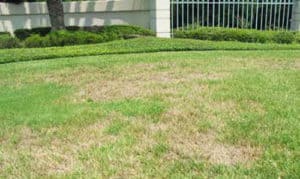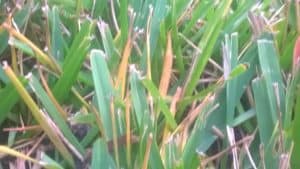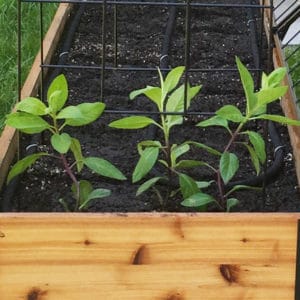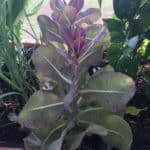 In May, extreme drought conditions left lawns brown and patchy in Central Florida. In June, record-breaking rainfall brought back the flourishing green grass. Now, the lawn mowers are working double time to keep up, and so are the bugs. Many lawns are showing brown patches or yellow blades due to the changing conditions. There are a few different issues that could be affecting lawns and causing this condition. Typically, it’s either insects, disease, a nutrient deficiency or a watering issue. Proper diagnosis is key to finding the most effective solution and bringing your yards lush green grass.
In May, extreme drought conditions left lawns brown and patchy in Central Florida. In June, record-breaking rainfall brought back the flourishing green grass. Now, the lawn mowers are working double time to keep up, and so are the bugs. Many lawns are showing brown patches or yellow blades due to the changing conditions. There are a few different issues that could be affecting lawns and causing this condition. Typically, it’s either insects, disease, a nutrient deficiency or a watering issue. Proper diagnosis is key to finding the most effective solution and bringing your yards lush green grass.
One way to determine if insects are the cause of lawn damage is to do a “soap test.” Create a mixture of two gallons of water with two tablespoons of detergent soap. Use a watering can and drench a three-foot-by-three-foot area of grass. Then wait and see what types of bugs emerge. It is important to properly identify any bugs discovered. Follow this link to learn more about the difference between beneficial and harmful pests in the lawn: http://edis.ifas.ufl.edu/topic_lawn_insect_pests.

Beware of using different pesticides in a shotgun approach to eliminate pests. Most of the time, this type of treatment does not work and it is damaging to the environment. As responsible homeowners, everyone is accountable for the pesticide runoff and pollution that winds up in our storm drains and aquifers. Being an informed consumer is beneficial even if you have a lawn service that makes these decisions for you. If lawn pests need to be treated, choose treatments that are safer for the environment. Organic pesticides with the OMRI (Organic Materials Review Institute) label are recommended whenever possible to lessen the collective impact on our environment.
As a disease might be difficult to diagnose, take a lawn sample to your local County Extension Service Office, and they can help you get the sample analyzed properly (Orange County Extension Service Office – 6021 S. Conway Rd. Orlando, FL 32812; Osceola County Extension Service Office – Osceola Heritage Park, 1921 Kissimmee Valley Lane, Kissimmee, FL 34744).
Make sure that your lawn is properly fertilized in the fall to ensure the nutrients are available and the grass is healthy heading into the spring. This will help to reduce the stress in the grass and reduce the susceptibility to disease and pests.
Watering is another aspect of lawn care that is often miscalculated when there are large amounts of rainfall. Don’t forget to dial down the number of lawn-watering days for months like June. Then watch your grass for signs of stress to determine the appropriate watering days for the season.
In the Garden – Vegetable Spotlight 
Have you ever heard of longevity spinach? Salad greens are nearly impossible to grow through the summer months when the summer heat is here. Just know there are some creative options for your summer garden like malabar spinach and longevity spinach. These are not true spinach plants, however they make such a good substitute and are used in place of spinach in recipes such as stir-fries, soups, side dishes and smoothies.
Longevity spinach gets its name because it is said to prolong life by helping to decrease cholesterol, blood glucose, hypertension, rheumatism and viral ailments. The leaves are thick and crisp like lettuce with a good flavor and none of the bitterness of other lettuce varieties. Longevity spinach will stay crisp for several weeks without any sign of rot and can be made as tea or an extract. As seeds can be difficult to germinate, purchase transplants and show off the spinach in your Florida summer garden.
Amber Harmon, Owner
“We make gardening easy!”



Great article. Thanks for these tips!